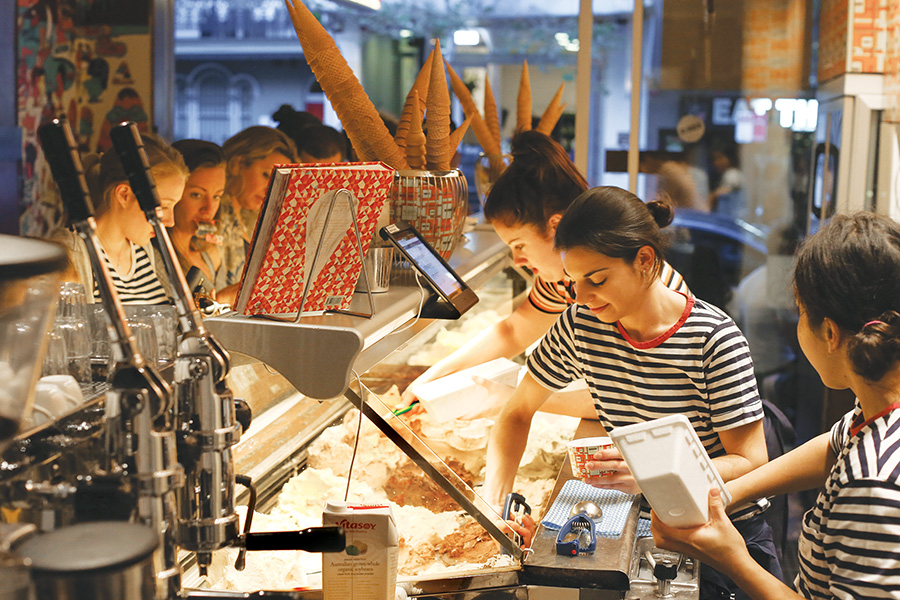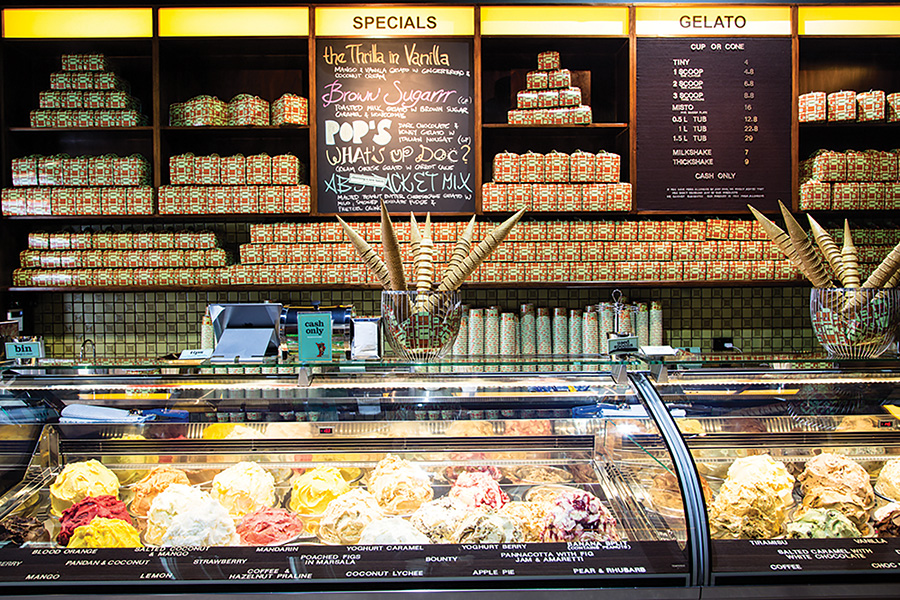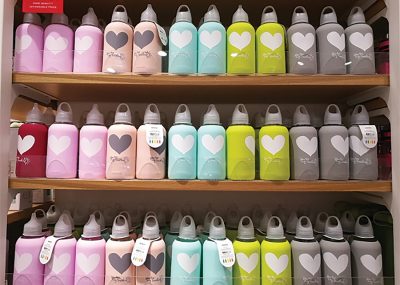The current events of the Banking Royal Commission has placed the corporate world on high alert with respect to promoting and protecting their brand values and reputation. Today’s ever-changing competitive landscape propels organisations into unfamiliar territory. Never before has the brand positioning, behaviour and supporting visual identity of an organisation been more likely to be immersed in scrutiny and review.
So what’s the big idea with brands in the first place? UK branding legend Wally Olins (1930 – 2014) states that as the products and services from competing organisations become increasingly similar, it is the brand identity of an organisation – its values, personality – purpose and market perception that sets it apart from its competitors.
In the world of retail, and the broader shopping centre industry, it is the brand and brand equity that drives shopper behaviour. This could be on a product or corporate level. Yes it’s true, that customer experience, activation, convenience and choice are all vital to a high performing retail brand, but the essence of retail is the brand.
In my past article for SCN entitled ‘Non-literal Branding’, I spoke of the tangible and intangible attributes of a brand, and the emotional response a person feels when they come into connection with a brand. This can be positive and negative, as well as indifferent.
Brands have a significant impact when the consumer experiences a strong and lasting emotional connection. Brands that connect with their audience often trigger a desire that cannot be fully rationalised. Why is that I wonder? Why do brands influence our decision-making?
Without getting too technical, there is a lot of science that explains how our hearts and minds react to brands, especially those we have an emotional connection with.
Brands and their underlying and perceived value affect our emotions and feelings and help inform our decision-making process. Humans think in narratives every day, no matter if we are at work, buying groceries, or planning an event or a holiday.
While we are picturing ourselves with the preferred brand of our choosing, the neural chemistry in our brain changes. The body produces two main neurochemicals – cortisol and oxytocin. Cortisol helps focus our attention and oxytocin centres on feelings of trust and empathy. When attention and empathy are combined, we build an emotional connection.
Former Saatchi & Saatchi CEO, Kevin Roberts, author of the books Lovemarks and The Lovemarks Effect argues, “the new consumer is no longer willing to passively accept whatever comes their way from producers”. Roberts calls it “the challenge of the ‘Attraction Economy’ – the ability to entertain, satisfy and surprise consumers across the wide range of their tastes and passions.”
What becomes apparent is that when it comes to making decisions, people think with their hearts. People are about 80% emotional and 20% rational. The essential difference between emotion and reason is that emotion leads to action, while reason leads to conclusions.
The take-away here is clear and simple: More emotion = More action!
So where does that leave us? Well back to the Banking Royal Commission and we find that the share price of some of the corporate brands has dropped more than 20% in recent months.
We hear of shareholder revolts, boardroom resignations and read of general public outrage and distrust of some of Australia’s major brands. We can see from all this drama how vitally important it is to manage brand reputation and stay on the right side of the emotional equation.
Shopping centres continue to be a major interaction between products (brands) and buyers. It is in the store that brands can tap into human emotional receptors and create decision-making moments that cannot be replicated online. Shopping centres and the brands they promote can offer the visitor the lure of mystery, sensuality and intimacy. Shoppers get to touch, smell and feel. The in-store experience becomes one of theatre, drama and excitement. It is in the store that more than 80% of shopper decisions are made and 50% of switching between brands happens.
So who is doing this well, and how do brands connect with their audiences? One of my personal favourites is Gelato Messina. Founded by Nick Palumbo in 2002, Messina has been voted as the best gelato in Australia by the Good Food Guide and, at last count, has 182K Instagram followers.
Its basic mantra is to make people happy. The in-store experience is simple and authentic. Flavours change weekly (released on the same day across the country) and, of course you can try before you buy. People are often seen queued up, on occasion 60 deep, to experience Messina.
- Gelato Messina
- Messina- Founded by Nick Palumbo in 2002
- Messina Gelato
Retailing consultant Nicole Venter of Retail Oasis says diners are avoiding big bills at the end of a meal and instead buying the best thing they can get for a small price.
Venter comments that “people want authenticity, and that’s why they’re prepared to line up”. Venter says the novelty of lining up for an “it” brand offering an authentic version of a much-loved dessert is Messina’s winning formula.
The migration away from quick food service into casual dining is reflected in the recent Australian Bureau of Statistics figures that show a 17% growth in casual dining year-on-year, and a 2% decline in fast food patronage.
Landlords are increasingly keen to sign on Messina as a crowd puller. It was among the first retail tenants Lendlease signed on to its $6 billion Barangaroo project.
There is no doubt that ice cream is an emotionally driven product. Testament to the brand’s ability to focus in on the emotional desire of its customers, Messina is becoming a linchpin to many shopping centre developments – an anchor tenant in its own right. Soon to open a store in Los Angeles, the ‘rise and rise’ Gelato Messina in recent years is in stark contrast to Wendy’s, the US-based ice-cream vendor, whose franchise numbers in Australia is shrinking. Clearly, Messina has worked out how to marry products with emotion and transition that into purchase.
Another example is Miniso, a recent entry to Australia’s retail shores. A Japanese designer brand, Miniso professes to be the promoter of global ‘intelligent consumer products’.
Miniso’s promise to its customers is based on a life philosophy of ‘simplicity, nature and good quality’ and the brand proposition of ‘returning to nature’. Founded in 2011, Miniso already has 1,800 stores across 50 countries, with sales revenue of $1.5 billion and plans to eventually have 6,000 globally with an average monthly growth rate of 80 – 100 stores. The first Australian stores have opened in Westfield Hurstville, Bondi Junction and Chatswood in NSW.
- Miniso- a new entrant in to the Australia market
- Promotes ‘Intelligent consumer products’
- Love Life, Love Miniso
Some key factors are at play at Miniso including the updating of products every seven days, pricing at low levels, and targeting an intellectual consumer. There are some aspirational and adventurous brand statements being espoused by the brand including ‘pursuing a simple and natural life’, and the pursuit of ‘ethical retail’ that takes into account the earth’s resources, the environment and recycling.
Here we are seeing the legitimising of emotion as a fundamental retail premise. What Miniso is tapping into is the human condition, and our primary and secondary emotions. Primary emotions are brief, intense and often cannot be controlled – joy, sorrow, anger, fear, surprise and disgust. Secondary emotions are more complex and combine the head with the heart – love, guilt, shame, pride, envy and jealousy. The retail emotion number 1 however is undisputed, and that is LOVE.
If retailers and brands can connect with purchasers on the level of ‘love’, the eternal bond between the brand and the consumer is made. Think of some memorable lines – ‘All you need is love’ or, ‘Love that car’ or, ‘I’m lovin’ it’. In the customer relationship cycle, the goal is to bring your customer from a point of awareness through a range of stages that ends in advocacy. In this paradigm, the relationship between love and respect is deep, compelling and symbiotic. Successful retailers and brands understand the connection between emotions and loyalty. It is said respect can’t be demanded, that it should be earned. In the lifecycle of products and brands it is an absolute must to present yourself with integrity and authenticity. Do that and sales will look after themselves.


























